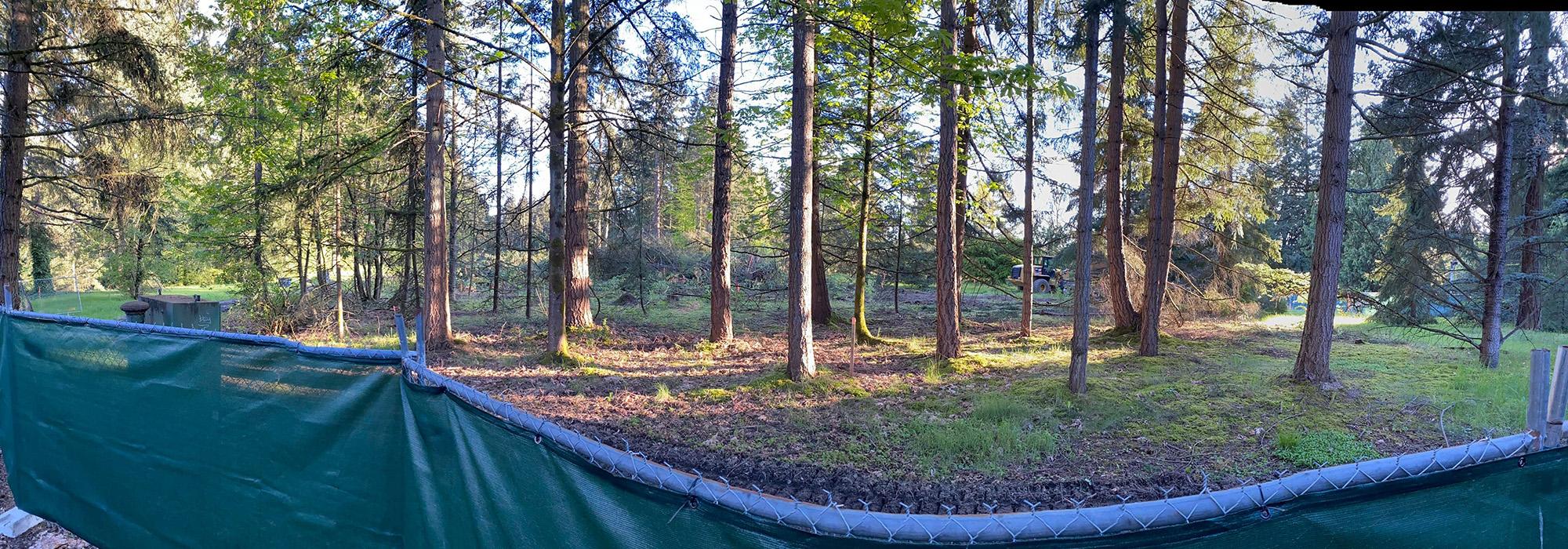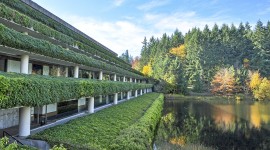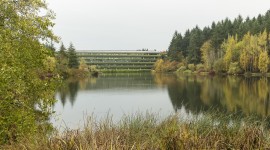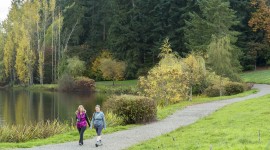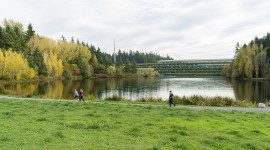At Weyerhaeuser, Save the Building, Sacrifice the Landscape
On May 13, 2022, Industrial Reality Group (IRG), the Los Angeles-based real estate development company that owns the iconic former Weyerhaeuser campus in Federal Way, WA, announced that the state legislature had approved funding for the state to explore leasing or buying the headquarters building. While this augurs well for the SOM-designed building architecture, portions of the landscape architecture, designed by Peter Walker, founding principal of Sasaki, Walker & Associates, are currently being clear cut to make way for two massive warehouses.
As the noted historian Marc Treib wrote in a January 2021 letter to Federal Way Mayor Jim Ferrell: “Envisioned and built as completely complementary and symbiotic, with its corresponding element, neither building nor woodland and meadow would possess the power and beauty that grace them. It appears just short of criminal that such an important and representative modern landscape should be destroyed for as mundane a function as storage.”
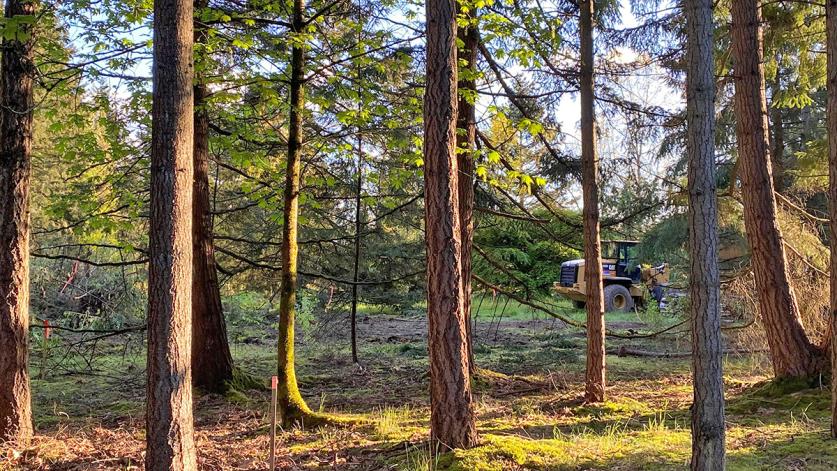
Unfortunately, this is an all too familiar scenario in which the future of the building architecture is treated as paramount while the landscape architecture is seen as the sacrificial lamb.
IRG received all the necessary approvals from the City of Federal Way for site development work to begin (building permit applications are still under review). In a May 2 letter to supporters, Save Weyerhaeuser Campus (SWC) wrote:
“We had hoped that our participation in the historic review portion of the U.S. Army Corps of Engineers’ [USACE] wetland permit process on the Warehouse A and [Warehouse] B sites would result in preserving key areas of the campus, or at the very least the adverse effects of the buildings would be mitigated. But after nine months of bi-weekly calls, IRG requested a formal Jurisdiction Determination from the USACE on those sites and the Corps determined that it has no jurisdiction over those wetlands. The USACE stated that the particular wetlands on the property were not waters of the U.S. or significant enough to trigger a review by the agency, so no Corps permit was required. That meant the USACE required no further action from IRG, and the city was given the green light to finalize its permitting process.”
During the reviews pursuant to Section 106 of the National Historic Preservation Act that involved more than 40 consulting parties including SWC, The Cultural Landscape Foundation, landscape architect Peter Walker, and others, the Washington state Department of Archaeology and Historic Preservation, IRG and USACE were very close to signing a memorandum of agreement that would have protected the façade of the headquarters building, provided view-conservation easements for the north and south meadows and required denser landscape buffers to minimize the visual impacts from the new development, SWC’s letter states.
“At the final meeting, we were told that these negotiated easements would be revisited when the USACE permitting process begins for the three-warehouse project [Greenline Business Park] on the north end of the campus.”
That project is still under review by the city of Federal Way.
“When the time comes, SWC and the other consulting parties will be back at the USACE table with IRG and the state Department of Archaeology and Historic Preservation,” SWC wrote. “We hope we can hold IRG and the state accountable to finalize the memorandum of agreement to implement the already agreed upon easements, together with other mitigation actions necessary — such as protecting the health of North Lake — from the adverse effects of the massive development.”
As long as cultural landscapes remain invisible, and we don’t apply methods for assigning their value, we can expect more landscapes to serve as sacrificial lambs for new building construction.



